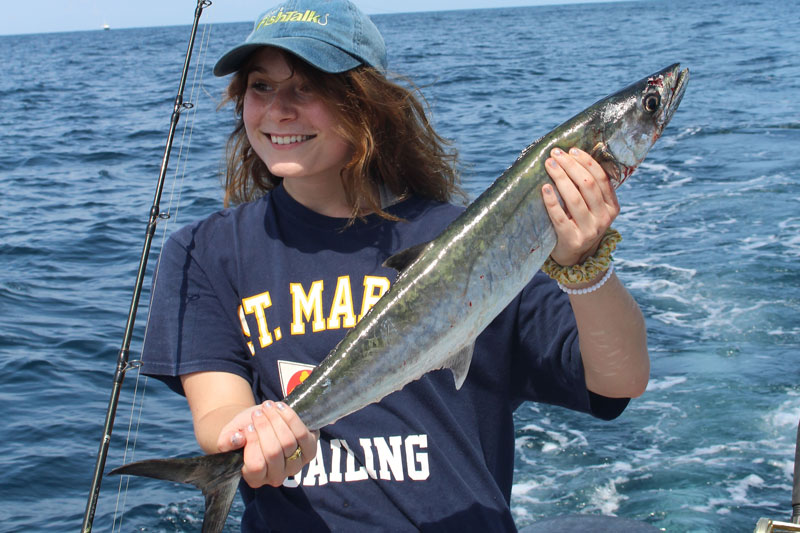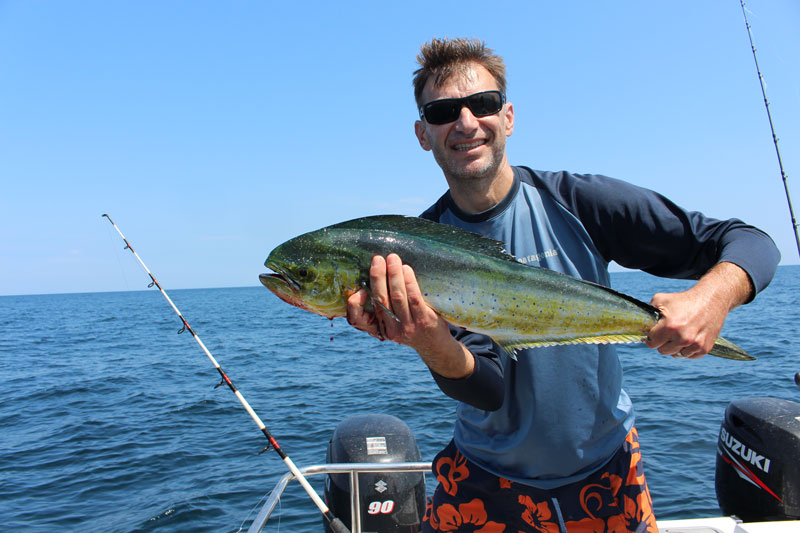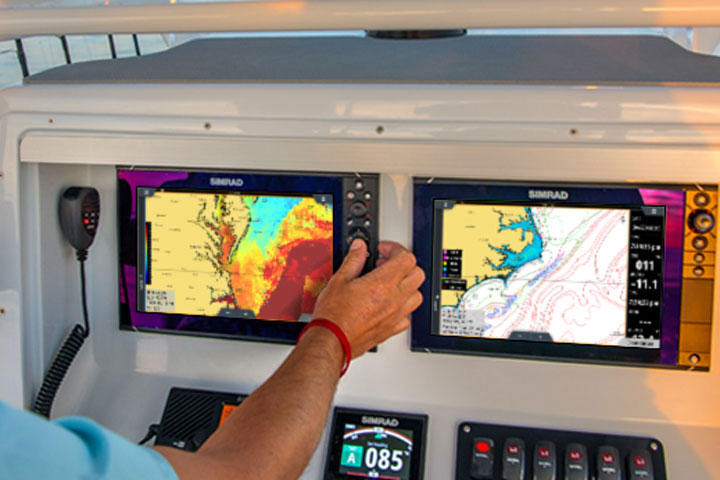Presented by Sirius XM Marine
When it comes to offshore fishing, rolling the weather dice is a much bigger deal than it is on a protected waterway. You may not want to completely cancel a trip, but there will be times when you get a few miles from the inlet and realize that continuing offshore will be a mistake. Or if you have SiriusXM Marine on your boat, you may glance down at your chartplotters and see that a vicious storm is headed right for the same waypoint that you are. If for whatever reason you choose to abort the journey it’s always smart to have a Plan B ready to enact so you can salvage the day. Otherwise, that awesome fishing trip will turn into a bust. Here are some tips and tricks to keep in mind that will help you make something cool happen when there’s a big, fat question mark in the equation.

Bait and Switch
Even when the plan is to hit the canyons and troll for tuna, be prepared for some emergency bottom fishing by bringing some lighter tackle. That way if you decide you need to pull back the throttles far short of blue water you can at least try to hook up with some flounder or sea bass. No, you won’t be thrilled by the new game plan. But catching doormats and dinners is a lot better than going back to the dock empty-handed.
What about bait? We hope you’re carrying a box of squid regardless of Plan B, because trolling the “Squidly” will often save the day when tuna don’t want to eat. See Rigged Squid Save the Tuna Fishing Day if you’re not familiar with how to rig a Squidly. Ballyhoo will work in a pinch, though they aren’t exactly the bait of choice for these species. Slice them into strips three or four inches long if flounder are around because they like to see some flutter, or chunk them up for sea bass.
On the planning side of the equation, also make sure you know where wrecks and reefs are nearby along your intended flight plan. If you’re running your own boat and have plenty of spots marked in the chartplotter, great. But if you’ll be on someone else’s boat, it’s a different story—it never hurts to look up some numbers ahead of time and slip them into your back pocket. Note: If you have SiriusXM weather at the helm and they don’t (or vice versa) and there’s any questionable weather in store, it makes sense to consider switching boats. Wouldn’t you rather have the ability to see where those squalls are, which way they’re headed, and how fast they’re moving? Yeah, we thought so.
Trolling the Lumps
Whichever port you leave from there are sure to be some inshore lumps on the way to blue water. And while we anglers are often blinded by visions of canyon pelagic monsters, these lumps hold fish much of the season. Do you have any offerings aboard that might prove appealing to bluefish or king mackerel? Both species will hit ballyhoo, though you’ll have a ton of baits bitten in half if you don’t rig a stinger on wire. Spoons like Tony Accetta Pets or Crippled Alewives are often better offerings for these species, so it’s a good move to keep a few on hand at all times.

You can troll the surface with success for blues and kings, but you’ll do better if you get those baits down a bit. Be sure to keep a few number-one and number-two inline planers aboard, along with some ball-bearing swivels to rig halfway down the leader whenever spoons are in the mix.
Hope Floats
You know those batches of bass trap floats you always go through while headed offshore? These may be in substantially shallower waters than you’ll find at the lobster pot floats on the canyon edge, but many seasons they do hold decent numbers of mahi-mahi. Most of the inshore mahi will be smaller than those encountered farther out, with two to five pounders being the norm. But larger fish do pop up sometimes and any way you look at it, catching a mess of mahi is a whole lot better than aborting a trip and going home with an empty fishbox.
You can go from pot to pot and bail more or less as you would offshore, but often all the fish will be at one or two specific floats in a field of dozens that stretches for miles. So, it’s usually more effective to troll for them. Even if you’d rather catch the fish on light spinning gear start out by trolling, and after you hook up and figure out where the fish are you can toss some chunks and get the light tackle ball rolling by bailing.

Since these fish may be on the small side, when you troll the pots it’s best to downsize your offerings and leave the ballyhoo on ice. Small pink plastic squid just three or four inches long, mini-sized daisy chains, and small spoons are all good offerings. Small mahi love chewing on slow-trolled swimming plugs, too.
Time Warp

Always remember that if you have a weather feed via SiriusXM marine weather, you can work Plan B in reverse. When the report is iffy plan to fish close to home in inshore waters, but make the offshore run your alternate option. Just leave the dock packing all of the appropriate gear for both venues. As you go for the bottom fish, blues and kings, or bass pot mahi, glance at the chartplotter every now and again and keep constant tabs on what the wind is doing, how big the waves are, and where the storm fronts are headed, all of which can be displayed right on the MFD via SiriusXM. If you fish for a few hours and see that the outlook improves, then you can crank up the lines, point the bow east, and unexpectedly enjoy some time out in the deep.
Do we wish the weather was great every time we had the chance to head offshore? Well, of course we do. But we all know darn well that there will be days when we can’t get all the way out there. Be prepared with a Plan B like one of these, however, and you can still have an awesome day on the water despite the weatherman’s best efforts to ruin a good time.
